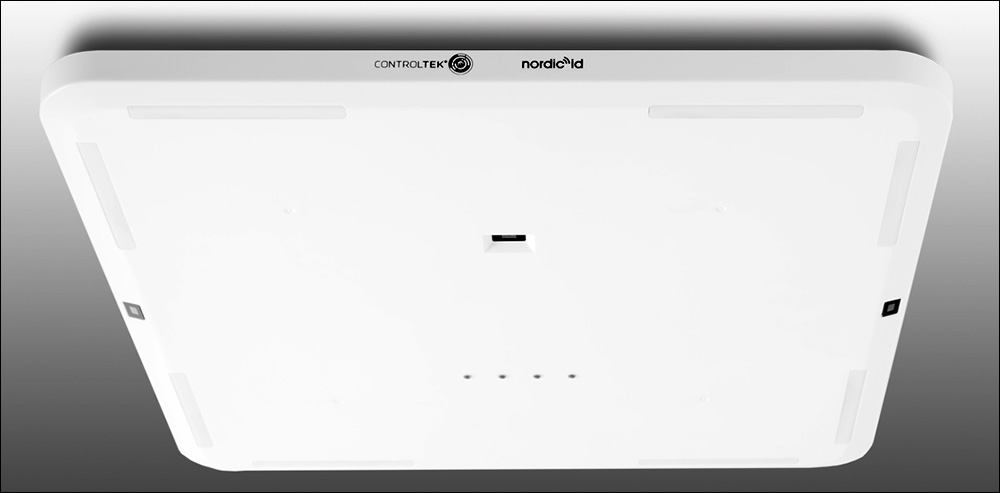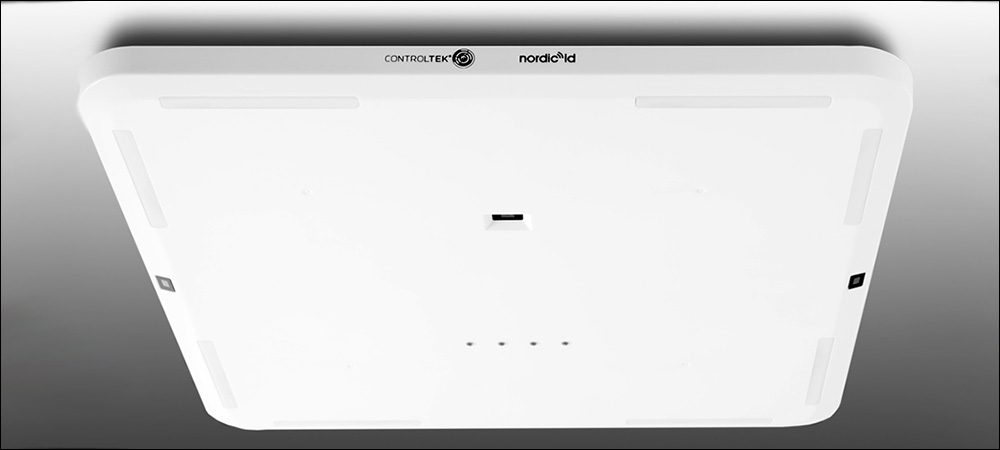- Identifying What Is Leaving the Store
- Time of Flight to Detect Direction and Speed
- A Gateway for Inventory Management
Security technology company ControlTek has released an RFID- and lidar-based solution that provides electronic articles surveillance (EAS) to stores for loss prevention. The firm’s EAS system, known as InFlight RFID, is the latest release in its CT360 line of solutions for retailers. The system leverages a built-in Nordic ID UHF RFID reader, as well as time-of-flight (ToF) light detection and ranging via a lidar unit. ControlTek was a finalist in the 2022 RFID Journal Awards, presented at RFID Journal LIVE! 2022, in the category of Best New Product.

ControlTek’s InFlight RFID EAS system
The InFlight RFID system is being adopted globally by apparel and athletic goods retailers to protect merchandise and prevent or detect theft. The technology has also been used in autonomous vehicles, and by a U.S. defense agency. The solution includes Bluetooth Low Energy (BLE) and Wi-Fi connectivity so that it can be used as a gateway device for businesses that employ RFID or other Internet of Things (IoT) handheld readers for inventory counting.
Based in Bridgewater, N.J., ControlTek makes security solutions for banking, retail and other sectors. Its retail solutions include EAS systems and asset-protection technologies. The company’s ControlSpan RFID software and RFID readers are being rolled out by Jockey International throughout the United States. During the past year, the company developed the InFlight RFID solution that similarly employs RFID, along with ToF functionality.
Identifying What Is Leaving the Store

Tom Meehan
“With a nine-element antenna array and 28 software beams, InFlight RFID offers the most advanced RFID array on the market for the highest performance possible,” says Tom Meehan, ControlTek’s chief strategy officer and chief information security officer. This next-generation RFID-based EAS reader uses lidar ToF sensors to detect the speed and direction in which objects are moving, he explains, providing highly accurate location-tracking data linked to a specific RFID tag read. This information can then be used for theft detection, asset tracking and real-time inventory management.
RFID as EAS provides retailers with more than just basic loss prevention. “InFlight RFID’s state-of-the-art technology tells retailers exactly what item has left the store so retailers can replenish merchandise,” says Rubin Press, ControlTek’s global sales VP. Traditionally, EAS technology has protected stores with a basic alarming mechanism. Shoppers are familiar with the EAS pedestals often deployed on each side of a store exit. An EAS hard tag responds to an electromagnetic transmission, which triggers an alarm.
EAS is effective but not smart, Meehan says. Such systems can alert employees or management if a tagged item moves through a doorway, but RFID provides a key piece of information that a traditional EAS system cannot: namely, the unique ID number of the product being removed. For this reason, and because RFID tags are more commonly attached to apparel products for inventory-management purposes, stores are looking for RFID systems that could provide both EAS data and alarming.
There are some challenges facing the use of RFID systems, though. For one thing, UHF RFID tags can be read at a distance of approximately 15 meters (49 feet). Readers thus need to be finely tuned to ensure that they are not picking up stray reads from tagged items that are nearby but not passing through a doorway.
Time of Flight to Detect Direction and Speed

Rubin Press
The InFlight RFID system is intended to provide very precise data, including whether a tag is actually passing through the doorway, the direction and speed at which it is doing so, and if there is a person within that field. To accomplish this, the technology uses a combination of a UHF RFID reader and a lidar-based ToF sensor. The overhead unit accommodates a 13- to 15-foot coverage area when mounted on a typical store ceiling, and it can also be installed behind ceiling tiles to be completely concealed. It includes a nine-element antenna array with 28 software-controlled antenna beams as part of a beam-steering array.
High sensitivity and read accuracy, due to multiple overlapping beams, allows for a variety of RFID tag form factors to be used, Press says, enabling more options for asset protection. The lidar sensors add another level of intelligence, he explains, by measuring the distance between the sensor and an object passing through its field of view. The laser beams emitted for the device create a 3-D representation of the area around the unit.
The device comes with ControlTek’s InFlight software, which can be configured according to a user’s particular needs. For instance, Press says, a store could set the configuration to disregard tag reads of products displayed next to the doorway. If those tags moved, however, their tag read status would change. “We can set the software to identify if someone is running,” Press states. “The software employs artificial intelligence to not only detect and identify an object’s direction and map out an area for coverage, but also [determine] the likelihood that a product is being taken without being purchased.”
In a standard payment transaction, for example, the RFID tag on a garment would be removed or disabled at the time of purchase. As the clothing left the store, the RFID reader would not interrogate its tag. If the shopper took the product out of the store without purchasing it, however, the InFlight RFID gateway would read the tag, trigger an audible alert and forward data about the item’s color, size and style to authorized parties, based on the unique ID number encoded on the RFID tag.
An integrated alarm can be configured to provide alerts in different sequences, depending on how many assets or tags pass through the door, which could indicate an organized retail crime (ORC) incident. The solution is designed to detect ORC incidents in which large numbers of items are removed by multiple people.
Beyond detecting RFID tag reads, the device’s lidar technology can carry out people counting, enabling stores to understand how many individuals enter and leave the premises, along with where and when they are together. The initial return on investment for the solution, Press says, is in knowing what is leaving the store, as well as how many items are removed. Thus, even if a shrinkage event is not stopped, the inventory data will be updated so replenishment orders can be placed.
A Gateway for Inventory Management
The device acts as a hub with Wi-Fi and BLE functionality. If a store leverages handheld RFID readers, those devices could transmit read data directly to the InFlight RFID system. The InFlight reader could manage that data and forward it to the server, similarly to how a gateway or IoT edge device would function. The company released the product late last year in a soft launch, Meehan says, and it is now commercially available worldwide.
The solution is now being evaluated or planned for piloting with a combination of existing and new ControlTek customers, Press reports. “We feel it’s the most sensitive reader on the market,” he states, adding that the system is priced competitively but provides greater functionality than standard RFID reading system. The technology could be used for applications beyond retail EAS, he notes, such as managing high-value tools at a manufacturing site and ensuring they do not leave a specific area, such as the assembly floor.
Key Takeaways:
- The intelligent EAS system leverages RFID to identify products or assets, as well as lidar for monitoring environmental data, such as the direction of movement, speed and the number people in the area.
- The overhead device can be used in industrial or other sectors to ensure assets remain within secured areas, and that they are identified if they leave.


